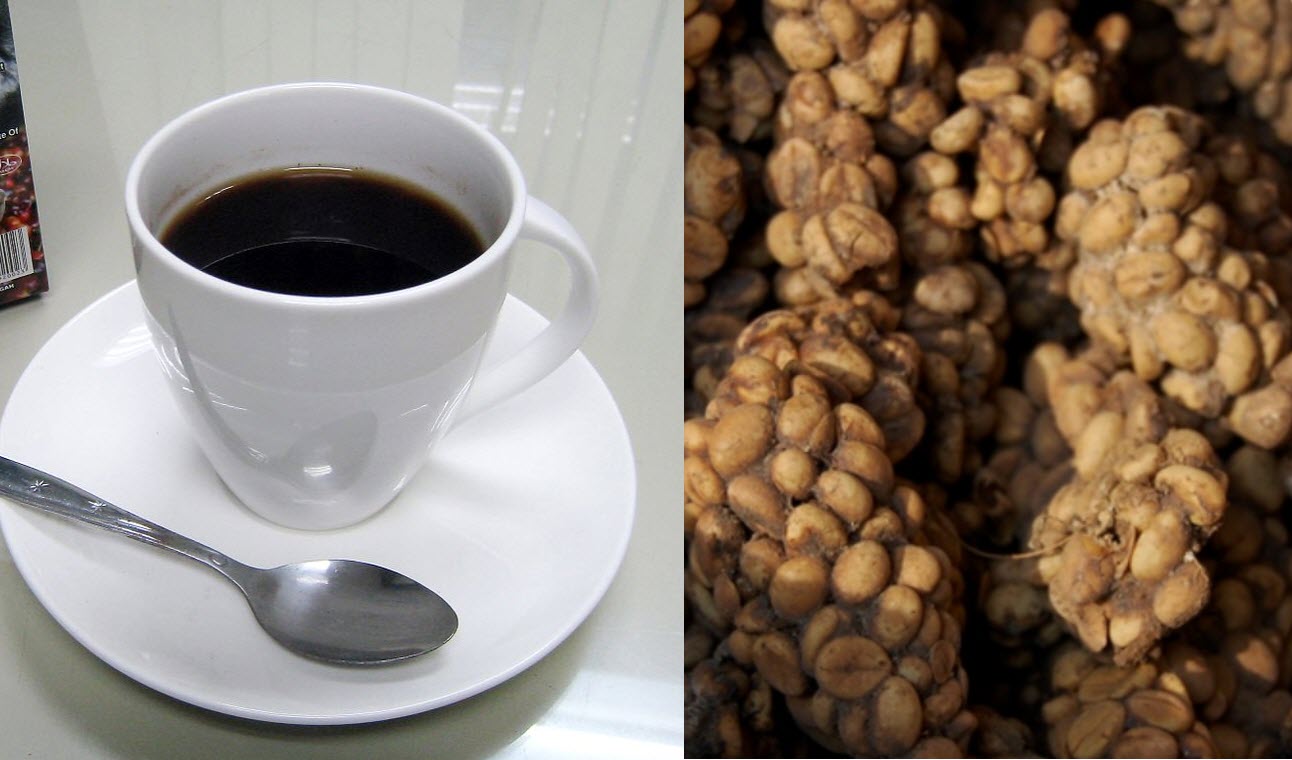Kopi luwak
Contents
Kopi luwak, also known as civet coffee, is an expensive coffee made from beans that have passed through the digestive system of the Asian palm civet. It is lavish, mysterious, and boasts a backstory rich enough to clinch an Academy Award.
Kopi luwak stands not just as a beverage but as a testament to coffee culture’s diversity and complexity. It’s more than a morning ritual; it’s an exploration of taste, ethics, and tradition. Whether it’s worth the splurge is a matter of personal ethics, curiosity, and, perhaps, a willingness to partake in a piece of coffee lore. Let’s unravel the allure behind this premium brew and see what sets it apart.

The backstory
Hailing from the lush landscapes of tropical Asia, the essence of kopi luwak’s charm lies in its unique production process. The Asian palm civet, a tree-climbing omnivore, plays the protagonist in this story. These creatures are coffee cherry connoisseurs, selecting only the crème de la crème of cherries to feast on.
The civet digests the pulp, but the seed (coffee bean) is not – at least not completly. As the beans travel through the civet’s digestive system, they undergo a natural fermentation process that’s believed to imbue kopi luwak with its distinctive taste. Post-digestion, the beans are pooped out by the civet, then collected by farmers, cleaned, and roasted into the luxurious coffee that commands attention and wallets worldwide.
Poop coffe, or a sip of sophistication?
Yes, this is coffee made from beans that were found in animal feaces. But it is also something else, and when it comes to taste, kopi luwak is often described as a symphony in a cup—a smooth, velvety texture with chocolate undertones, lacking the bitter aftertaste common in traditional brews. It’s the coffee equivalent of a velvet robe; luxurious, refined, and exceptionally smooth.
Controversy
The journey from the coffee plant to your cup is not without its dark clouds. The high price of kopi luwak have led to questionable farming practices, where civets are kept in captivity under harsh conditions to meet demand. Also, civets are captured from the wild to be sold to these farms, which impactst he long-term sustainability of the wild populations.
This dilemma has stirred a pot of controversy surrounding the production of kopi luwak, prompting coffee connoisseurs and animal rights advocates alike to call for change The industry is now seeing a shift towards more ethical practices, with a focus on wild-sourced kopi luwak. These beans are harvested from the wild, with no civets harmed in the making of your brew. This approach promises a guilt-free indulgence in one of the world’s most unique coffees, ensuring both your conscience and taste buds are appeased.
Kopi luwak transcends the realm of ordinary coffee, offering an experience steeped in history, culture, and a hint of adventure. If you’re contemplating a taste, I recomend you aim for beans that are ethically sourced to ensure your luxury sip doesn’t come at the expense of animal welfare and the sustainability of the wild populations.
Questions and answers about the Asian palm civet
The animal known as luwak in Indonesia is called Asian palm civet in English and has the scientific name Paradoxurus hermaphroditus. Below, we will answer some common questions about this animal – the civet essential to the production of kopi luwak.
How big is it?
The adults weigh around 2-5 kg. The body, without the tail, is circa 50 cm long, and the tail is of roughly the same lenght.
Does it only eat coffee berrries?
No, this is an omivore. It eats a variety of fruis and berries depending on what´s available, and will also happily eat insects and even small mammals. It likes to drink sweet sap from palm trees.
Where does it live?
It lives in southeastern and southern Asia.
It is both a terrestrial and arboeral species, i.e. it spenda its life both on the ground and up in the trees.
The typical habitat for the Asian palm civet is primary forests, but some populations have adapted and are now living in secondary forests and selectively logged forests. There are also populations that have gotten used to living in close quarters with humans in places where fruit trees are plentyful, such as planted parks and suburban gardens. You are more likely to hear a civet than see it, because they tend to be active in the dark.
Is it endangered?
The Asian pam civet has been listed as Least Concern on the IUCN Red List since 2008 and is thus not considered an endangered species if we look at the total population.
In some parts of its native range, the situation for the civet is more problematic, and one of those places is Indonesia where civets are captured from the wild to work on the kopi luwak farms. Rules are in place in Indonesia to limit the capture and trade in civets, but they are not really enforced well.


Recent Comments